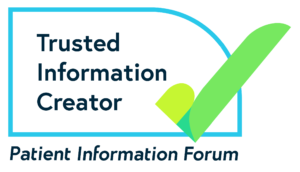What is migraine?
Find out what it means to live with migraine, from symptoms, causes and treatment to impact on everyday life.
1 in 7 people living with migraine
10 million people with migraine in the UK
2nd highest cause of years lived with disability worldwide
About migraine
Migraine is a complex, long-term health condition. If you have migraine, you have repeated migraine attacks. These tend to involve a moderate to severe headache along with other symptoms. Migraine attacks can be a whole-body experience that can make it difficult to function normally. We have more information on migraine symptoms below.
Migraine can be classed depending on how often you get attacks. This is different for everybody.
- Episodic migraine is when you have headache and migraine symptoms on less than 15 days per month.
- Chronic migraine is when you have headache on at least 15 days a month, with migraine symptoms on at least eight of those, for three months or more.
Migraine attacks vary from person to person but typically last between four hours and three days. Most people don’t have any symptoms in between migraine attacks. However, you might find it takes days to recover from a migraine attack. And some people with chronic migraine may have symptoms on a daily basis.
Migraine can change over time and at different points in your life. For example, it often improves as you get older, especially after the menopause in women. The frequency and severity of your migraine attacks can change, and you might start getting different symptoms too.
Migraine can have a huge impact on many aspects of your life, including your family and social life, education and work. It can have a negative effect on your mental health too. When migraine is having a substantial, negative impact on your normal day-to-day activities, it may be considered a disability.
Who gets migraine
Around 1 in 7 people worldwide get migraine. That’s the equivalent of over a billion people worldwide, and around 10 million in the UK.
Migraine can affect anyone and can start at any age. But it’s most common between the ages of 25 and 55. Children can get migraine too. In girls, it often starts during puberty.
Both women and men can get migraine, but it is two to three times more common in women than men.
Symptoms of migraine
Your experience of migraine will be unique to you. Different people get different symptoms. Symptoms vary in how severe they are and how much they impact you too. For some people, a migraine attack means they are unable to function normally.
The most common symptoms of a migraine attack include:
- moderate or severe headache
- being very sensitive to light, sounds and smells
- feeling sick (nausea) and being sick (vomiting).
The headache that you get with migraine is often described as a throbbing pain. It’s often on one side of your head only, although this isn’t always the case. You may notice that it gets worse when you move your head or when you move around.
A migraine attack tends to happen in stages, and you may get different symptoms in each of these. For example, you may feel very tired (fatigued) and notice mood changes in the early warning stage of an attack, or as you recover in the postdrome stage.
Up to 1 in 3 people also get migraine attacks with aura. An aura is a set of symptoms that includes problems with sight, speech and sensations. You may have migraine attacks with aura or without aura.
There are also some specific types of migraine where you may experience additional symptoms such as dizziness, vertigo (a spinning sensation) and problems with hearing. These include hemiplegic and vestibular migraine.
Differences between headache and migraine
There are different types of migraine and headache and it can be hard to tell the difference between them. You can experience different types of headaches at different times of your life. If you have migraine you may also experience other types of headache disorder. If you are taking painkillers frequently, this can also lead to medication overuse headache.
Tension headaches are the most common type of headache. The main differences between migraine and tension headache are displayed in the table below.
| Migraine | Tension headache |
| Moderate to severe headache – may be disabling | Mild to moderate headache – not disabling |
| Often on one side of the head (but not always) | Usually on both sides of the head |
| Throbbing pain | Pressing or tightening pain, but not throbbing |
| Pain can get worse when you move your head, or with routine activity | Pain does not get worse with movement or routine activity |
| Other symptoms, such as sickness, sensitivity to light or sound, and aura for some people | No other associated symptoms |
| May notice defined stages of an attack | Not associated with particular stages |
| Lasts for hours to days | Usually lasts for minutes to days |
If you are having regular headaches or other symptoms that you suspect could be migraine, seek advice from your doctor. Keeping a headache diary can be helpful in making a diagnosis. Getting the right diagnosis is important so you can manage your headaches and find the most suitable treatments.
Causes of migraine
Migraine is a complex neurological condition. Neurological means it affects your nervous system. If you have migraine, the nerves in your brain are thought to be more sensitive than normal. A migraine attack starts when the nerves become over-stimulated. This leads to a series of changes involving nerve signals, chemicals and blood vessels in your brain. This causes the symptoms of a migraine attack.
Migraine attacks often happen without any clear reason or identifiable trigger. But there can be certain triggers that may make you more likely to have an attack. These are different for everyone, but may include stress, skipping meals, hormonal changes and changes in your sleep pattern.
It’s not fully understood exactly why some people develop migraine. But there is known to be a strong genetic link. This means your risk of developing migraine is higher if you have a family member who has the condition.
Treatment of migraine
There is currently no cure for migraine. But there are many ways to manage it, including treatment options that may help. The best treatment for you will depend on the type of migraine, your symptoms, how often you have attacks and how bad they are. It will also depend on your medical history.
Migraine treatment usually includes acute medicines such as painkillers and anti-sickness medicines. These aim to reduce or stop symptoms of an attack. If you are having frequent or very severe migraine attacks your doctor may suggest preventive medicine. You take this regularly to reduce how often you get migraine attacks and how bad they are.
Other, non-drug treatments for migraine include acupuncture, migraine devices, supplements and behavioural techniques. Reviewing any lifestyle factors or known triggers that may contribute to your attacks may also help. However, this can be difficult and is unlikely to stop migraine attacks completely.
Getting the right treatment for migraine can be difficult. We have more information on the recommended treatment pathway for migraine.
About our information
 This information has been written by The Migraine Trust Information and Support Services team. It has been reviewed by our panel of expert health professionals and people affected by migraine.
This information has been written by The Migraine Trust Information and Support Services team. It has been reviewed by our panel of expert health professionals and people affected by migraine.
Our information has been awarded the PIF TICK quality mark for trustworthy health information.
- GBD 2021 Nervous System Disorders Collaborators. Global, regional, and national burden of disorders affecting the nervous system, 1990-2021: a systematic analysis for the Global Burden of Disease Study 2021. Lancet Neurol. 2024;23(4):344-381. doi:10.1016/S1474-4422(24)00038-3
- Peres MFP, Sacco S, Pozo-Rosich P, et al. Migraine is the most disabling neurological disease among children and adolescents, and second after stroke among adults: A call to action. Cephalalgia. 2024;44(8). doi:10.1177/03331024241267309
- Steiner TJ, Husøy A, Stovner LJ. GBD2021: headache disorders and global lost health – a focus on children, and a view forward. J Headache Pain. 2024;25(1):91. doi:10.1186/s10194-024-01795-2
- NICE Clinical Knowledge Summaries. Migraine. August 2025. cks.nice.org.uk, accessed 22 September 2025
- British Association for the Study of Headache (BASH). National Headache Management System for Adults. 2019. bash.org.uk
- StatPearls Publishing. Migraine headache. 5 July 2024. ncbi.nlm.nih.gov/books, accessed 23 September 2025
- International Headache Society. IHS classification ICHD-3. ichd-3.org, accessed 22 September 2025
- Definition of disability. 8 January 2025. acas.org, accessed 22 September 2025
- NICE Clinical Knowledge Summaries. Headache – tension-type. July 2022. cks.nice.org.uk, accessed 23 September 2025
- StatPearls Publishing. Migraine with aura. 29 February 2024. ncbi.nlm.nih.gov/books, accessed 24 October 24 2025
- Benjamin T, Gillard D, Abouzari M, et al. Vestibular and auditory manifestations of migraine. Curr Opin Neurol. 2022;35(1):84-89. doi:10.1097/WCO.0000000000001024
- Goadsby PJ, Holland PR, Martins-Oliveira M, et al. Pathophysiology of migraine: a disorder of sensory processing. Physiol Rev. 2017;97(2):553-622. doi:10.1152/physrev.00034.2015
- Elmazny A, Magdy R, Hussein M, et al. Migraine triggers and lifestyle modifications: an assessment of patients’ awareness and the role of healthcare providers in patient education. J Headache Pain. 2025;26(1):189. doi:10.1186/s10194-025-02107-y
- National Institute for Health and Care Excellence (NICE). Headaches in over 12s: diagnosis and management. 17 December 2021. nice.org.uk
If you have feedback on our information, please get in touch at: feedback@migrainetrust.org
Last reviewed: October 2025 | Next review due: October 2028


